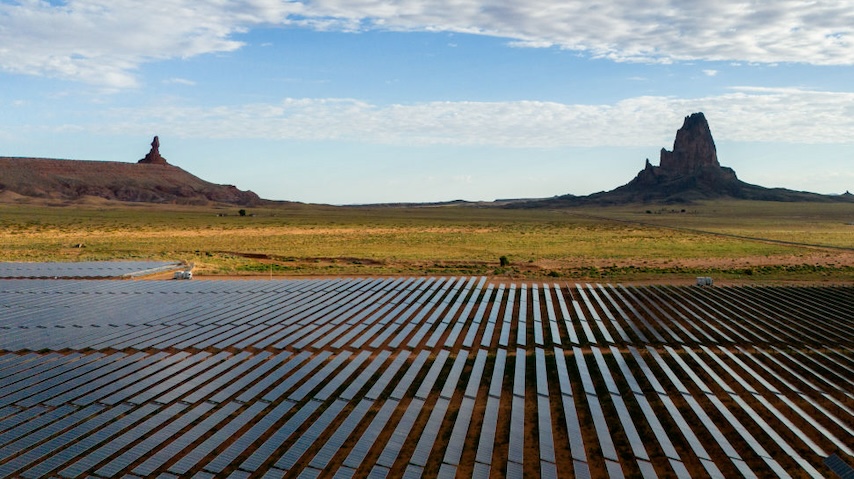Global Solar Installations Set to Blow Past Expectations for Second Year in a Row
Photo by Brandon Bell/Getty Images
The world will install close to 600 gigawatts of solar power in 2024, according to a new report from the U.K.-based energy analytics firm Ember. That mark would blow past most projections, and jump well over the record-setting pace of solar installations set only last year.
The firm found that 292 GW had been installed by the end of July, and projects the number will reach 593 GW by the end of the year. “That’s 29% more than was installed last year, maintaining strong growth even after an estimated 87% surge in 2023,” authors of the new report wrote.
The bulk of this solar boom can be found, unsurprisingly, in China. The world’s second biggest economy and second most populous country could install as much as 334 GW this year alone, making up 56 percent of the global total; that’s a 28 percent jump from an already big 2023 in China’s solar industry.
Add in the U.S., India, Germany, and Brazil, and you’ve got 75 percent of all the solar additions around the world. But that’s not to say some smaller markets aren’t starting to ramp up — countries like Pakistan and Saudi Arabia are also making big solar gains.
Overall, these numbers far exceed some of the main projections out there. For example, the International Energy Agency’s 2024 prediction, released in January, guessed 400 GW would be installed; if Ember’s projection for the rest of the year is correct, that means IEA had a shortfall of almost 50 percent.
This is, obviously, all good news. But how good?
“The massive step up in solar capacity installations in 2023 and 2024 has shifted perceptions around solar’s role in the energy transition,” the Ember authors wrote. “This now puts ambitious climate pledges within reach.” A tripling of overall renewable energy capacity by 2030, which would likely require 25 percent of all global electricity generation coming from the sun, now doesn’t seem so impossible. There are obviously plenty of inputs into what happens next, but for now at least all indicators for solar power are pointing in the right general direction.